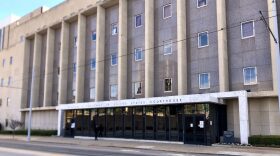After the first round of certain federal COVID-era education funds for Oklahoma ended in chaos, the second round is being handled with significantly more oversight.
StateImpact’s Beth Wallis spoke with Oklahoma Watch education reporter Jennifer Palmer to talk through what this new money is being used for, who’s managing it — and who’s not.
This transcript has been edited for brevity.
Beth Wallis: Jennifer, thank you for joining me.
Jennifer Palmer: Thanks for having me.
Wallis: We’re here to talk about federal funds. Let’s talk about GEER. That’s an acronym for the Governor’s Emergency Education Relief Funds, and let’s just start there. What are these funds, and what were they supposed to be used for?
Palmer: Sure, this was money that came through the COVID relief passed by Congress back in the early days of the pandemic, back in 2020. And these were funds specifically given to governors of every state, and they were to be used on unmet educational needs.
Wallis: So you’ve been following this for a while. Can you take us through your reporting process? What were you trying to find out? And did you run into any challenges in getting those answers?
Palmer: Yes to both. One of our investigations from last year was about GEER 1. That was a joint project with The Frontier. There were multiple programs that the governor spread that money around, and the one that we wrote the most about was the Digital Wallet — these were small grants given to low-income families to buy school supplies. Turned out, quite a few folks bought TVs and barbecue grills and things that were not educational and were able to do so because there wasn’t enough oversight, and the system was not checked in a way that it should have been.
I wrote a lot about GEER 1, and I kept thinking, what about GEER 2? So this was a second round of money that the governor got. The first round was about $40 million, second round was $17.7 million. I did a story in, I think last year, about GEER 2 and how it wasn’t being spent because they were working with the federal government after the fallout of GEER 1. We had [Office of Inspector General] from the federal government here, we had auditors saying we needed better process. And so that’s what the governor was trying to do, was shore up our processes and do this in a way that met all of the federal requirements. And so that caused a long delay. They didn’t actually get the funds until this year.
Wallis: It’s not going unnoticed that none of this money is being managed by the State Department of Education or State Superintendent Walters. Can you remind us briefly what happened to the last round of GEER money and why a different office is managing this round?
Palmer: So for GEER 1, the governor’s office let some other folks help design and manage the programs. And Ryan Walters, before he was superintendent, even a little bit before he was Secretary of Education, as the head of Every Kid Counts Oklahoma, was overseeing the Digital Wallet program. And, of course, this is the one that auditors found the most misspending. And this was kind of the moment of where the accountability kind of fell apart. And so this time around, none of it’s going to the State Department of Education.
Wallis: So we know the money is going to six projects. Can you give us kind of a top line overview of what some of those projects are?
Palmer: Sure, so the biggest one is Donors Choose, and this was done without a lot of notice or fanfare or anything. At the start of the school year this year, teachers were putting up projects on Donors Choose. This is a web platform where teachers can post a project, say they want to buy some supplies for their classroom, or they want to do something, maybe a little extra. Well, the state dedicated over $11.5 million from this COVID money to filling those projects. So they were able to fulfill 12,000 projects in a span of about a week and a half.
There were a couple of others. The Boys and Girls Clubs of Oklahoma County got some money to increase its programs. And those funds are mostly in south Oklahoma City and the Capitol Hill neighborhood, is kind of where they were focusing their projects.
Wallis: So this money has to be spent by Jan. 31. What happens if it’s not?
Palmer: I think from the ones that I’ve talked to, it looks like it will be done. If it didn’t make the deadline, it would have to go back to the federal government, or I mean, it could be reallocated, but at this point, we’re kind of running out of time on that as well. So the Donors Choose one, like I said, the biggest one, all that money’s out the door.
Wallis: Well Jennifer, thank you so much for talking with me today. And as always, thank you for your very important reporting.
Palmer: I appreciate it.







